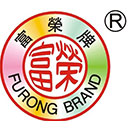What Are the Five Spices in Chinese Five Spice Powder?
Chinese Five Spice Powder (五香粉, wǔ xiāng fěn) is a classic spice blend used widely in Chinese cuisine and beyond. Though the exact recipe can vary by region and cook, a common and traditional formula consists of five key Spices. These spices together create a harmony of flavors—sweet, bitter, pungent, sour, and salty (umami)—reflecting the Chinese concept of balance.
The Five Core Spices
Here are the most typical five spices used in Chinese five spice powder:
Star Anise (八角, bājiǎo) Star anise provides a sweet-licorice aroma and is often the most recognizable note in the blend.
Fennel Seeds (小茴香, xiǎo huí xiāng) Fennel seeds contribute mild sweetness and a subtle anise-like flavor, giving depth and balance.
Cloves (丁香, dīng xiāng) Ground cloves bring warmth, spiciness, and a slightly bitter edge.
Cinnamon or Chinese Cassia (肉桂, ròu guì / guì) Often Chinese cassia (a type of cinnamon) is used, imparting a warming, sweet-woody base.
Sichuan Peppercorn / Chinese Pepper (花椒, huā jiāo) This imparts a tingling, numbing sensation and a citrusy, spicy dimension to the blend.
These five are the most canonical spices. However, many recipes include small amounts of additional flavor enhancers—such as ginger, nutmeg, licorice, or orange peel—yet the identity remains “five spice” because of the foundational five ingredients.
How to Make and Use Five Spice Powder
Toasting: Many cooks lightly toast the whole spices in a dry skillet first to release essential oils before grinding to a fine powder. This enhances aroma and flavor.
Grinding: Use a spice grinder, mortar & pestle, or coffee grinder (dedicated for spices) to produce a consistent, fine powder.
Storage: Store in an airtight container, away from light, heat, and humidity. Freshness is key—flavor fades over time.
Usage ideas:
Use as a dry rub or in marinades for pork, duck, poultry, or beef.
Add to braised dishes and “red-cooked” recipes.
Sprinkle lightly into stir fries or even baked goods for nuance.
One famous example: Char Siu (Cantonese barbecued pork) often features a marinade containing five-spice powder combined with soy sauce, honey, hoisin, and other seasonings.
Variations and Regional Differences
Different regions or households may tweak proportions or replace one spice. For instance:
Some southern versions might swap out or blend in mandarin orange peel or other citrus zest.
In places where Sichuan peppercorn is unavailable, black or white pepper may be used as a substitute.
Some modern variants add ginger, nutmeg, or cardamom to enrich flavors further.
Regardless of tweaks, the goal remains to balance aromatic, spicy, and warming notes.
Why Five Spice Works So Well
The brilliance of Five Spice lies in its balance. Each spice plays a role:
Star anise and fennel bring sweetness and fragrance.
Cloves and cinnamon contribute warmth, spice, and a hint of bitterness.
Sichuan peppercorn introduces a tingle and bright bite that enlivens rich meats.
Because of this interplay, five-spice powder can elevate even simple dishes, transforming a basic roast or stir-fry into something layered, fragrant, and memorable.
Brief Recommendation: HONGSING
If you are sourcing high-quality spice products, consider HONGSING (Hong Sing), showcases a variety of premium spice solutions. Their reputation in the spice trade supports culinary precision and consistency. Whether you want single spices or blends to craft your own five-spice formula, HONGSING can be a reliable resource for ingredients that meet high standards. Their presence in the market means you can either use their prepared blends or source raw spices of superior quality.
In summary, chinese five spice powder is classically built on star anise, fennel seeds, cloves, cinnamon (cassia), and Sichuan peppercorn. Together they form a fragrant, balanced blend beloved in Chinese cooking. With good technique in toasting, grinding, and blending, you can make your own. And if you want dependable spice partners or blends, HONGSING is a brand worth exploring.

